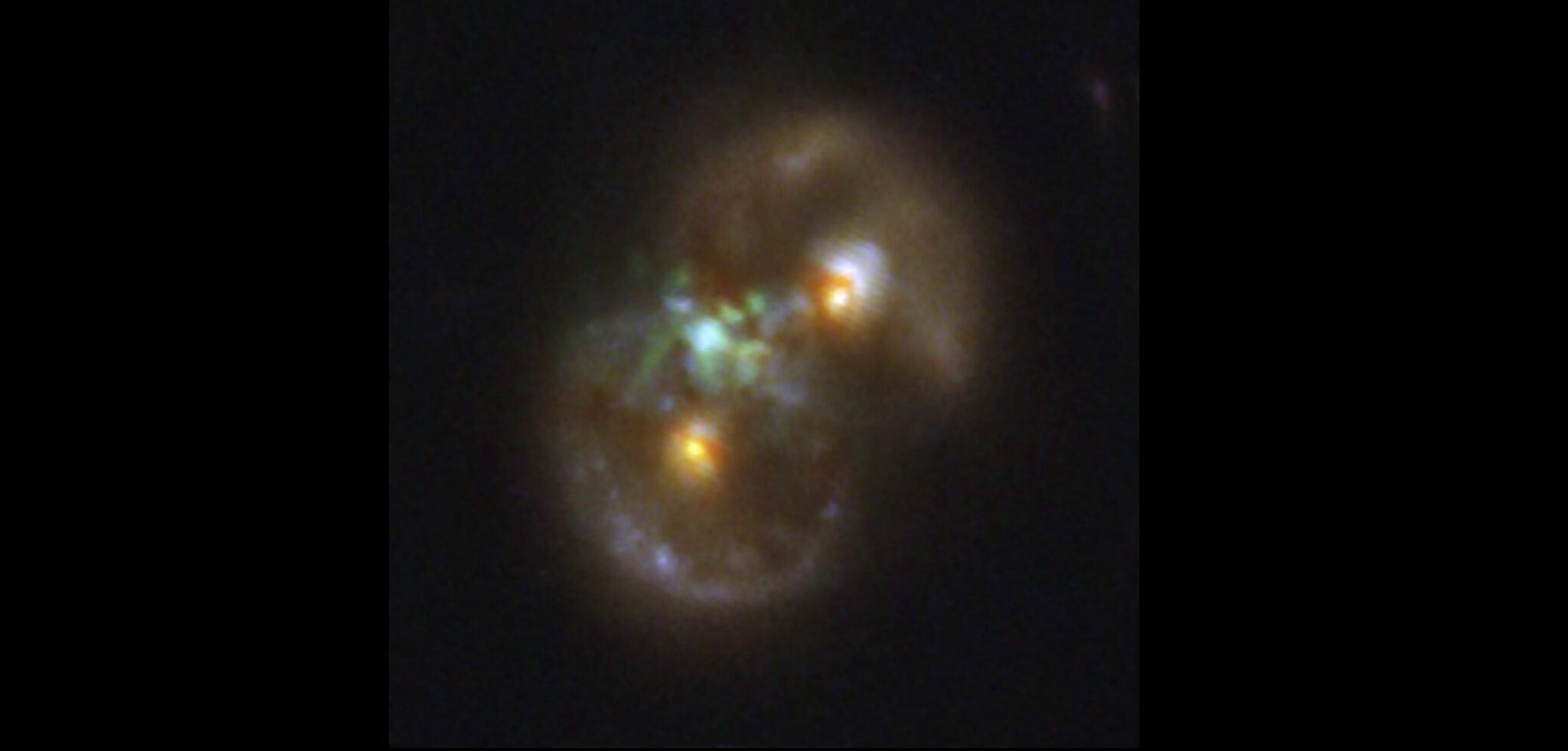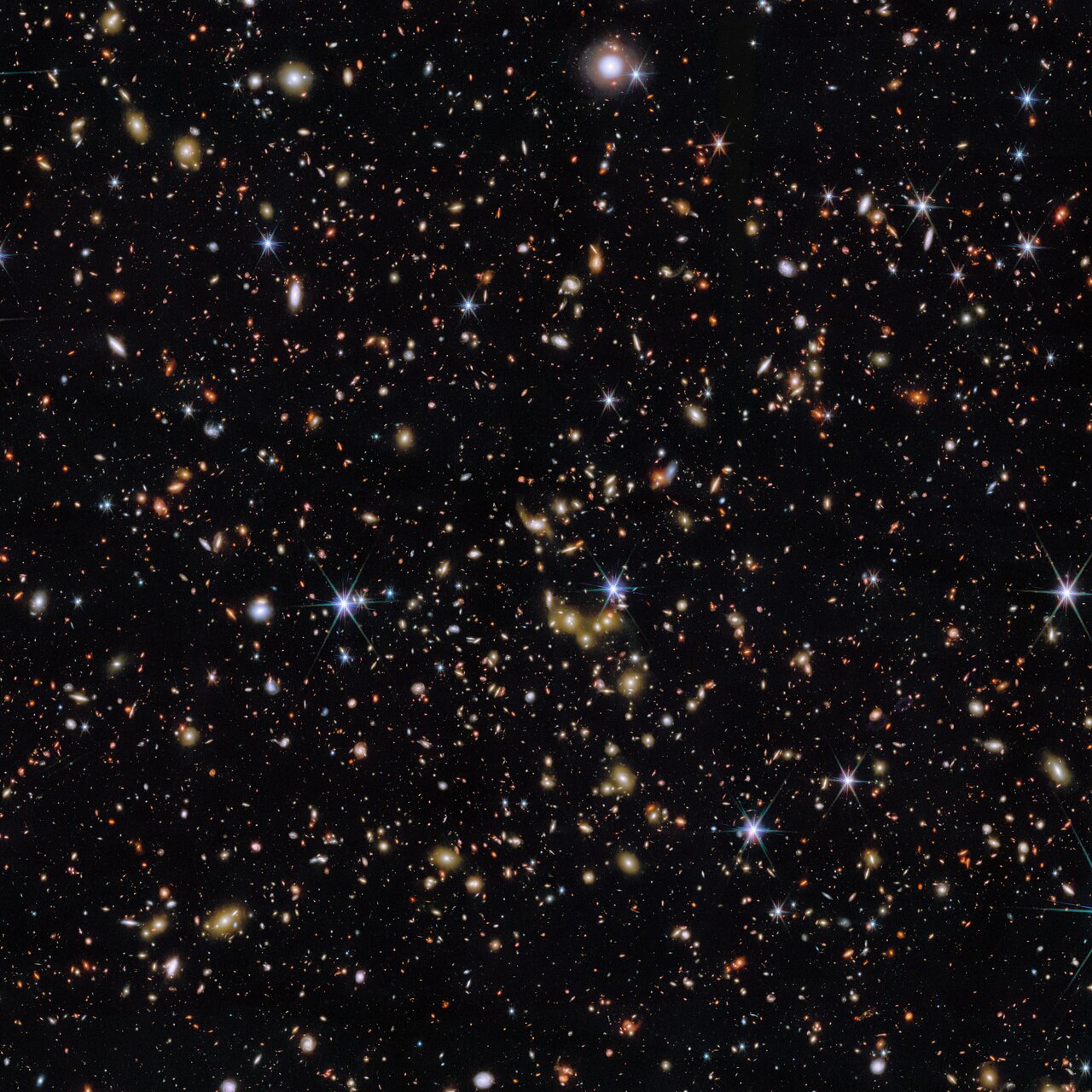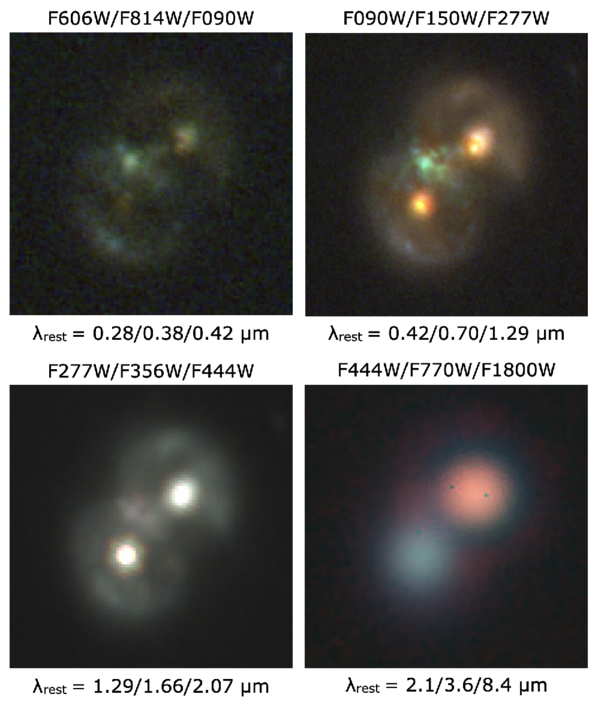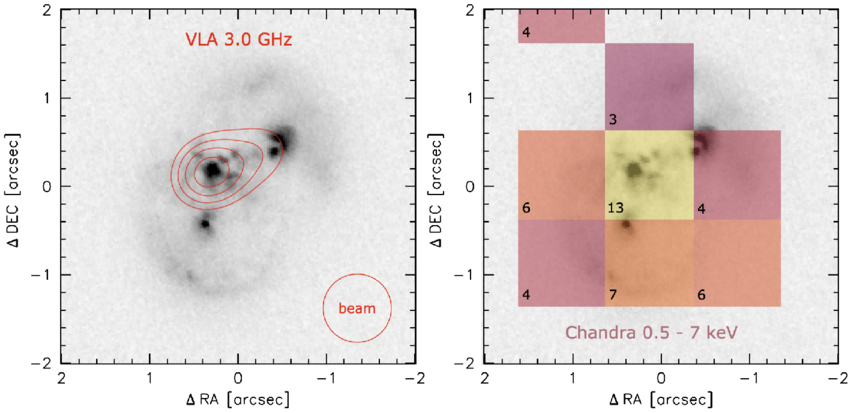From :- Sky & Telescope
By :- AAS NOWA
Edited by :- Amal Udawatta

ASA, ESA, CSA, STScI, P. van Dokkum (Yale University)
Researchers have discovered a rare ring-galaxy duo that appears to harbor a supermassive black hole formed through direct collapse — a process similar to what may have jump-started the growth of the first supermassive black holes in the universe.
Researchers have discovered a rare ring-galaxy duo that appears to harbor a supermassive black hole formed through direct collapse.
Searching for Oddballs

ESA/Webb, NASA & CSA, G. Gozaliasl, A. Koekemoer, M. Franco, and the COSMOS-Web team; CC BY 4.0
To find something remarkable, sometimes you have to go looking for it. As described in an article published today in the Astrophysical Journal Letters, a research team led by Pieter van Dokkum (Yale University; Dragonfly Focused Research Organization) recently struck gold in their search for unusual objects.

van Dokkum et al. 2025
To learn more about this strange object, named the Infinity Galaxy for its resemblance to the infinity symbol, the team gathered data from the Hubble Space Telescope, the Keck I telescope, the Chandra X-ray Observatory, and the Very Large Array. The resulting multiwavelength portrait allowed the team to weigh the two nuclei, showing them to be massive — containing 80 billion and 180 billion solar masses of stars — and extremely compact. The new data also revealed that the cloud of gas between the nuclei contains a 1-million-solar-mass black hole.
The nuclei, the rings, and the gas between them appear to be the result of two disk galaxies that shot through one another, forming a pair of collisional ring galaxies. To achieve the infinity-symbol shape, the galaxies must have met one another face on, forming two parallel nucleus–ring systems that we see from an angle of about 40º. As the galaxies collided, some of their gas would have been torn away, left tangled together in the void between the two nuclei.
To the Infinity Galaxy and Beyond

Adapted from van Dokkum et al. 2025
That explains the nuclei, the rings, and the gas between them — but where did the black hole come from? It’s possible that the black hole’s position between the two nuclei is simply a coincidence, either due to a chance alignment with an unrelated galaxy that hosts the black hole, or because the black hole happened to end up there after being ejected from one of the galaxies involved in the collision, or even from another galaxy that merged with the Infinity Galaxy.
The authors favor a different explanation, in which the location of the black hole is no coincidence. In this scenario, the colliding galaxies crushed a gas cloud between them so forcefully that the condensed gas collapsed directly into a black hole. The authors estimated that the collision happened 50 million years ago and created a 300,000-solar-mass black hole that subsequently grew to its current mass of 1 million solar masses. Direct collapse has been proposed to be a source of the seeds of supermassive black holes in the early universe, though there are some differences between the proposed process in the early universe and what may be happening in the Infinity Galaxy.
Van Dokkum and collaborators concluded their article by saying that future observations could clarify whether the black hole is truly associated with the Infinity Galaxy — and as reported in a press release today, preliminary analysis of follow-up observations with JWST show just that. With the black hole now definitively placed within the Infinity Galaxy, the evidence for direct collapse is strengthened, though more work is needed to probe this possibility.
Comments
Post a Comment